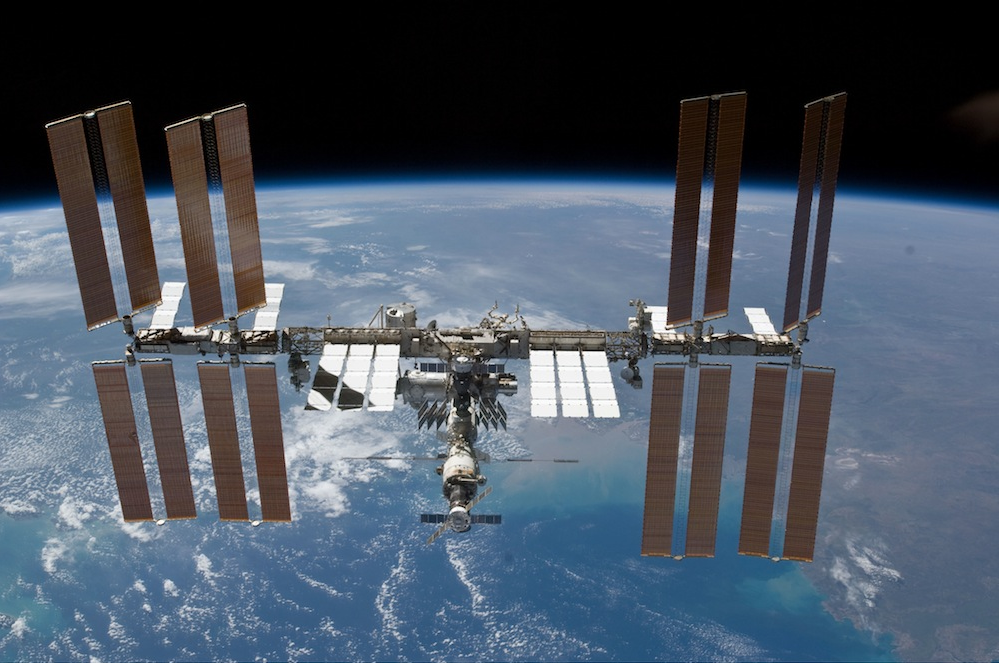It’s now a space program tradition. Whenever we start a new SSEP flight opportunity, it’s time for NASA Johnson Style. It’s a video (see below) that will get students and teachers in the frame of mind to start Mission 8 to ISS. We want everyone to recognize that what they are about to embark upon is very real. Your students are being asked to truly slip on the shoes of microgravity researchers and be part of America’s and Canada’s Space Programs.
Program operations for SSEP Mission 8 to the International Space Station (ISS) – the tenth SSEP flight opportunity in just 4.5 years – officially begin on February 23, 2015. We expect 15 communities to participate in Mission 8, and for the first time in the history of the program, three of those communities are in Canada. Mission 8 is projected to engage 3,800 students in microgravity experiment design, and at least 780 flight experiment proposals are expected to be received from student teams. A 2-step formal proposal review process, culminating with the SSEP International Step 2 Review Board meeting at the Smithsonian in Washington, DC, will select one flight experiment for each community. (You’re invited to meet the Mission 6 Step 2 Review Board.)
While we have been onboarding communities for Mission 8, 17 flight experiments comprising the Mission 6 Yankee Clipper II payload, reflecting the culmination of 6,850 students engaged in experiment design and selected from 1,487 flight experiment proposals, just returned to Earth on SpaceX-5 on February 10, 2015. The Mission 6 experiments were on the International Space Station (ISS) for a month – an immense spacecraft bigger than a football field, located 260 miles above the Earth, and traveling at 4.5 miles/second. ISS is really big, and if you watched Super Bowl XLIX on February 1, you might want to see this blog post.
Mission 6 was also a remarkable lesson in real science. The original Mission 6 experiments were lost in the dramatic explosion of the Orb-3 rocket on October 28, just a few seconds after launch at the Mid-Atlantic Regional Spaceport, Wallops Island, VA. There were 42 Mission 6 student researchers and a total of 130 SSEP delegates at the launch site, just a short 1.7 miles from Pad 0-A when the rocket exploded. The immediate despair after the loss of all experiments and what it took for the student flight teams to return to flight with reconstituted experiments – launching just 2.5 months later on SpaceX-5, on January 10, 2015 – is an amazing story. This is real spaceflight. SSEP is the real space program. What the Mission 6 student flight teams did is exactly what it takes to be an explorer on the frontier. The lesson was profound – failure happens, and we do in the face of failure defines who we are.
You are invited to read an emotional account of the loss of the Mission 6 experiments, and what it took to return to flight, which is the subject of a December 8, 2014, SSEP National Blog post.
You might also want to read the NASA Press Release with NASA Administrator Charlie Bolden on the re-flight of Mission 6 Yankee Clipper. There is also the compelling story of one Mission 6 team in Michigan that was covered by NBC News.
While program operations are ready to begin for Mission 8, and Mission 6 experiments just returned to Earth, Mission 7 operations have been underway for months. The 24 flight experiments comprising the Mission 7 Odyssey payload were selected last December, and are right now moving through formal Flight Safety Review at the Toxicology Office a NASA Johnson Space Center. All Mission 7 student flight teams are now optimizing their experiments, and planning for a currently projected launch aboard SpaceX-7 in mid-June 2015, blasting off from Cape Canaveral Air Force Station, FL, adjoining Kennedy Space Center. We expect a significant number of delegations from the Mission 7 communities to attend. The Mission 7 flight opportunity engaged 10,700 students in experiment design and 2,521 flight experiment proposals were received from student teams.
WELCOME ABOARD TO THE MISSION 8 to ISS COMMUNITIES
To all Community Program Directors across the SSEP Mission 8 communities, use this video to get your students ready to roll. Put it up on the big auditorium (or cafagymateria) screen, turn down the lights, and TURN UP the volume.
It’s our way of saying welcome to America’s and Canada’s Space Programs. We are now a ‘go’ for launch of the Kitty Hawk payload of Mission 8 experiments in Fall 2015 – and you’re now living the adventure.
Real spaceflight all the time – that’s what we promised. In terms of STEM education for the 21st century, it’s the right stuff.
The Student Spaceflight Experiments Program (SSEP) is a program of the National Center for Earth and Space Science Education (NCESSE) in the U.S., and the Arthur C. Clarke Institute for Space Education internationally. It is enabled through a strategic partnership with NanoRacks LLC, working with NASA under a Space Act Agreement as part of the utilization of the International Space Station as a National Laboratory. SSEP is the first pre-college STEM education program that is both a U.S. national initiative and implemented as an on-orbit commercial space venture.
The Smithsonian National Air and Space Museum, Center for the Advancement of Science in Space (CASIS), and Subaru of America, Inc. are National Partners on the Student Spaceflight Experiments Program.


Who knew there was such wild dancing talent lurking beneath all those white lab coats and space suits? Kudos to all!